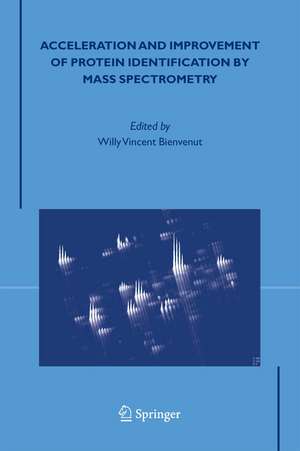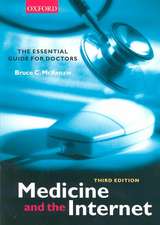Acceleration and Improvement of Protein Identification by Mass Spectrometry
Editat de Willy Vincent Bienvenuten Limba Engleză Hardback – 19 apr 2005
Several protein identification techniques are described, especially the peptide mass fingerprint with MALDI-MS based method. E.g. ionisation process, matrix available, signal reproducibility and suppression effect, as well as date treatment for protein identification using bioinformatics tools.
| Toate formatele și edițiile | Preț | Express |
|---|---|---|
| Paperback (1) | 1087.65 lei 6-8 săpt. | |
| SPRINGER NETHERLANDS – 19 oct 2010 | 1087.65 lei 6-8 săpt. | |
| Hardback (1) | 1094.70 lei 6-8 săpt. | |
| SPRINGER NETHERLANDS – 19 apr 2005 | 1094.70 lei 6-8 săpt. |
Preț: 1094.70 lei
Preț vechi: 1152.31 lei
-5% Nou
Puncte Express: 1642
Preț estimativ în valută:
209.65€ • 216.01$ • 175.63£
209.65€ • 216.01$ • 175.63£
Carte tipărită la comandă
Livrare economică 22 februarie-08 martie
Preluare comenzi: 021 569.72.76
Specificații
ISBN-13: 9781402033186
ISBN-10: 1402033184
Pagini: 320
Ilustrații: XXII, 298 p.
Dimensiuni: 156 x 232 x 23 mm
Greutate: 0.63 kg
Ediția:2005
Editura: SPRINGER NETHERLANDS
Colecția Springer
Locul publicării:Dordrecht, Netherlands
ISBN-10: 1402033184
Pagini: 320
Ilustrații: XXII, 298 p.
Dimensiuni: 156 x 232 x 23 mm
Greutate: 0.63 kg
Ediția:2005
Editura: SPRINGER NETHERLANDS
Colecția Springer
Locul publicării:Dordrecht, Netherlands
Public țintă
ResearchCuprins
Preface.- Acknowledgements.- List of Contributors.- 1: Introduction: Proteins analysis using mass spectrometry.- 2: Molecular scanner development: Toward clinical molecular scanner for proteome research: Parallel protein chemical processing before and during western-blot.- 3: Quantitation during electroblotting step: Enhanced protein recovery after electrotransfer using square wave alternating voltage.- 4: Signal traitment and virtual imaging (1/2): A molecular scanner to highly automated research and to display proteome images.- 5: Signal traitment and virtual imaging (2/2): Visualization and analysis of molecular scanner peptide mass spectra.- 6: Improvement in the peptide mass fingerprint protein identification (1/2): Hydrogen/deuterium exchange for higher specificity of protein identification by peptide mass fingerprinting.- 7: Improvement in the peptide mass fingerprint protein identification (2/2): MALDI-MS/MS with high resolution and sensitivity for identification and characterization of proteins.- 8: Proteomic and mass spectrometry: Some aspects and recent developments.- 9: Conclusions and perspectives.- Appendix.- Abbreviations used in this book.- Abbreviations for usual amino acids and chemical constants.- Index.
Recenzii
"This book is timely. It reviews in a concise form most techniques that should be known by scientists working in a proteomics laboratory or analysing proteins of interest. It first reviews the electrophoretic and chromatographic separation methods. It then summarizes the quantification and identification methods such as immuno-blotting, protein chemistry, peptide fingerprinting or sequencing by fragmentation. Several chapters highlight fascinating developments in the field of mass spectrometry and related techniques. The text shows the reader the perspective of this relatively new field of proteomics.
Finally, the book lists numerous references to critical work done many years ago and unavailable on computer databases. It should therefore be part of every laboratory’s library."
(Professor D.F. Hochstrasser)
Finally, the book lists numerous references to critical work done many years ago and unavailable on computer databases. It should therefore be part of every laboratory’s library."
(Professor D.F. Hochstrasser)
Caracteristici
Gives a large overview of protein/peptide chemistry developed over, at least, the last fifty years, e.g. animo or carboxylic groups modifications, charged group derivatisation and stable isotope labelling












